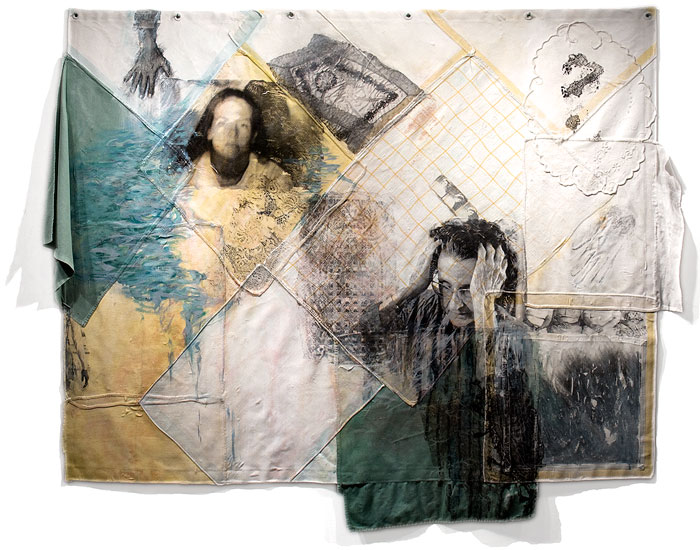Like a patchwork quilt, old media is revived (remediated) in the new
Photo used under Creative Commons from sallymankus.com
Understanding Remediation
According to Jay David Bolter and Richard Grusin in Remediation: Understanding New Media (2000), media have always had a fairly predictable cycle as they emerge and develop:
Like other media since the Renaissance—in particular, perspective painting, photography, film, and television—new digital media oscillate between immediacy and hypermediacy, between transparency and opacity. This oscillation is the key to understanding how a medium refashions its predecessors and other contemporary media. Although each medium promises to reform its predecessors by offering a more immediate or authentic experience, the promise of reform inevitably leads us to become aware of the new medium as a medium. (22)
Painting in the Renaissance introduced linear perspective as a way to erase the distinction between the simulated realism of the paintings and the real models. Trompe l’oeil, the superrealistic architectural painting technique, gained its popularity because of the way it seduced the viewer into collapsing the media into the space of its display and erasing the difference. Photography used technology to create exact replicas of the real through chemical processes, and for a while, this was assumed to be the replacement of painting. Film and video further reduced the distance between the real and the work of art by recording motion of the images of objects, and virtual reality holds the promise of completely erasing the space between the audience and the medium. What all these have in common is artistic motivation to make the medium disappear for the audience, to make experience of the world of the work immediate.
This can be called “the promise of reform” that each new medium holds, to build on and make better (less intrusive) the medium that preceded it. Making better is synonymous to immersive (or "unmediated") presence. We talk about being completely immersed in a work of art or a film, and virtual reality is defined by its ability to immerse. What happens though, according to Bolter and Grusin, is that this promise leads us to hypermediacy, defined as “a heightened awareness of a new medium as a medium” (22). This is perhaps best understood by example. Modernist art frequently draws attention to the medium itself as content, with the viewer’s meditation often focused on brush strokes or the raw beauty of the materials of a sculpture rather than a replicated realistic form. Likewise, collage and photomontage call as much attention to the media as to what is represented by or in the work. The authors state of hypermedia: “If the logic of immediacy leads one either to erase or to render automatic the act of representation, the logic of hypermediacy acknowledges multiple acts of representation and makes them visible” (36-37). Hypermedia, rather than making itself invisible, delights in its intrusiveness.
A critical way in which hypermedia manifests is through the embedding of one medium in another, an idea expressed by Marshall McLuhan in Understanding Media (1960) as “’the ‘content’ of any medium is always another medium’” (Bolter and Grusin 23-24). Bolter gives the example of a CD-ROM or DVD that contains picture galleries and collections of literary texts (48). In a case like this, the newer medium, the CD-ROM, is the transparent medium that foreground the older one. However, it never completely succeeds:
Since the electronic version justifies itself by granting access to the older media, it wants to be transparent. The digital medium wants to erase itself, so that the viewer stands in the same relationship to the content as she would if she were confronting the original medium. Ideally, there should be no difference between the experience of seeing a painting in person and on the computer screen, but this is never so. The computer always intervenes and makes its presence felt in some way…(Bolter and Grusin 48-49).

